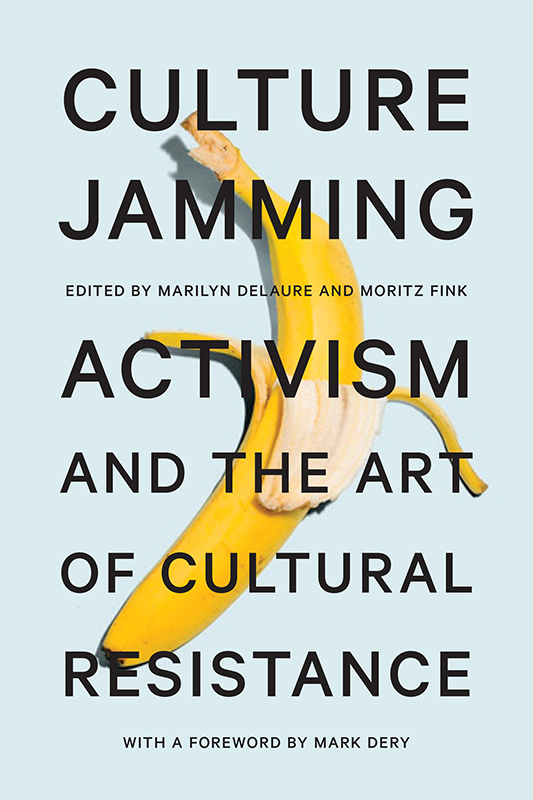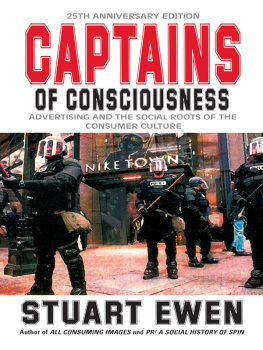
Culture Jamming
Culture Jamming
Activism and the Art of Cultural Resistance
Edited by Marilyn DeLaure and Moritz Fink

NEW YORK UNIVERSITY PRESS
New York
NEW YORK UNIVERSITY PRESS
New York
www.nyupress.org
2017 by New York University
All rights reserved
Foreword to this volume copyright by Mark Dery.
Culture Jamming: Hacking, Slashing, and Sniping in the Empire of Signs originally appeared in the Open Magazine Pamphlet Series, no. 25 (1993). Copyright by Mark Dery. Reprinted with the permission of the author.
Pranking Rhetoric: Culture Jamming as Media Activism originally appeared in Critical Studies in Media Communication 21, no. 3 (2004). Copyright by Taylor & Francis. Reprinted with permission.
An earlier version of Never Mind the Bollocks: Shepard Faireys Fight for Appropriation, Fair Use, and Free Culture appeared on Confessions of an Aca-Fan: The Official Weblog of Henry Jenkins, January 13, 2010. Copyright by Evelyn McDonnell.
An earlier version of The Poetics of Ruptural Performance was published in Liminalities: A Journal of Performance Studies 5, no. 3 (2009), as What the Fuck Is That? The Poetics of Ruptural Performance. Copyright by Tony Perucci.
An earlier version of Turning Tricks: Culture Jamming and the Flash Mob appeared in Liminalities: A Journal of Performance Studies 7, no. 2 (2011), as Badgering Big Brother: Spectacle, Surveillance, and Politics in the Flash Mob. Copyright by Rebecca Walker.
An earlier version of Billionaires for Bush appeared on the Reality Sandwich website, 2009. www.realitysandwich.com. Copyright by Andrew Boyd.
References to Internet websites (URLs) were accurate at the time of writing.
Neither the authors nor New York University Press is responsible for URLs that
may have expired or changed since the manuscript was prepared.
ISBN : 978-1-4798-7096-7 (hardback)
ISBN : 978-1-4798-0620-1 (paperback)
For Library of Congress Cataloging-in-Publication data, please contact the Library of Congress.
New York University Press books are printed on acid-free paper,
and their binding materials are chosen for strength and durability.
We strive to use environmentally responsible suppliers and materials
to the greatest extent possible in publishing our books.
Manufactured in the United States of America
10 9 8 7 6 5 4 3 2 1
Also available as an ebook
For culture jammers around the world: past, present, and future...
Contents
Mark Dery
Marilyn DeLaure and Moritz Fink
Mark Dery
Christine Harold
Marco Deseriis
Mark LeVine
Henry Jenkins
Christof Decker
Evelyn McDonnell
Michael LeVan
Benedikt Feiten
Michael Serazio
Moritz Fink
Tony Perucci
Rebecca Walker
Jack Bratich
Wazhmah Osman
Anna Baranchuk
Kembrew McLeod
Andrew Boyd
The Guerrilla Girls
xtine burrough
Marilyn DeLaure
Paolo Cirio
Paolo Ruffino, Matteo Cremonesi, Filippo Cuttica, and Davide Prati (IOCOSE)
Marilyn DeLaure
Mark Dery
Has culture jamming, that 1990s mash-up of media hacking, information warfare, terror art, and guerrilla semiotics, gone the way of all fads? The old rhetoric of opposition and co-optation assumed a world where consumers had little direct power to shape media content, Henry Jenkins contended in 2006, in his book Convergence Culture, whereas the new digital environment expands the scope and reach of consumer activities (215).
Is jamming a quaint anachronism in a networked world where Facebook and Twitter pass the mike to anyone with a Net connection, giving her access to a global PA system, free of charge? Where smartphone videos of the beat downs and murders of black people by white cops are driving the national conversation about race? Is jamming just more of the same crankypants elitism and gloomy declinism familiar from Neil Postmans Amusing Ourselves to Death (1985), the foundational text of the shoot-your-TV school of media criticism? Were the culture jammers of the 1990s heirs apparent to Marxist killjoys like the Adorno and Horkheimer of The Culture Industry: Enlightenment as Mass Deception (1944)? Were they vanguardist snobs whose disdain for the masses, so easily gulled by the hidden persuaders and subliminal seducers of Madison Avenue and Hollywood, was equaled only by their obliviousness to the conundrum at the heart of their argument: namely, if the media pull the wool over our eyes, how had they managed to spy out the truth? Is jammings tactical ironyits attempt to regard the Society of the Spectacle from a critical distancemere comic relief in the eyes of millennials born into a world where subcultural resistance is almost instantly appropriated by corporate coolhunters? Was jamming always an ornament to power (the irony!) in its paranoid insistence on the mind-controlling powers of the newsmedia, advertisers, and mass entertainment? In the twenty-first century, has culture jamming become irrelevant to the struggles of our moment because the old rhetoric of opposition and co-optation is laughably outdated, rendered obsolete by the digital disruption that has flattened media hierarchies, expanding the scope and reach of consumer activities?
Of course, no one would deny that we live in a media galaxy far, far away from the one jammers inhabited in the 1990s. The webspecifically, the many-to-many video-sharing sites like YouTube; social-media platforms like Facebook, Twitter, and Reddit; and alternative sources of news and commentary such as the Drudge Report and Breitbart on the Right and Truthout and the Daily Kos on the Lefthave (at least in theory) broken the chokehold that TV and papers of record such as the New York Times had on public discourse and popular opinion. Jamming in the 1990s was a subcultural backlash, given intellectual momentum by critics such as myself, against a society in which a powerful few spoke while millions listened. Broadcast news shaped the national conversation about current events, mobilizing mass consent for elite agendas and marginalizing dissenters who challenged the status quo consensus of pols, pundits, and think-tank hacks. Commercials ginned up consumer desire for fetishized commodities, drawing on mass psychology and Freudian analysis to bathe those commodities in an aura of powerful emotional associations.
By contrast, those whove grown up in the Digital Age are wise to the ways of the persuasion industry, immunized by their visual literacy, not to mention all those semiotics courses at Brown. Or so were told. And anyone with wi-fi access can speak truth to power. Anyone in the right place at the right time, smartphone in hand or dashboard cam rolling, can commit an act of journalism, the story goes.
It could also be argued that many of the tactics devised for semiotic guerrilla warfare in a pre-web worldwhen access to opposing viewpoints and platforms for public address was far more limitedare irrelevant in our networked age. And if not irrelevant, ineffectual: billboard banditry, dtourned ads, media hoaxes, street theater, and guerrilla interventions seem absurdly analog ways of hacking the matrix, circa 2016.
But since this is, after all, a foreword to an anthology of essays on culture jamming, it seems only fitting that I monkeywrench some of these received truths. To begin, the presumption that if, as A. J. Liebling observed, freedom of the press is guaranteed only to those who own one, then the claim that the web has radically democratized journalism conveniently ignores the fact that the social media where most of us swap memes and post links (to brand-name websites, more often than not) is private property masquerading as the town square. Whether were Like-ing LOLcat photos or lifting our voices in righteous rage about the social injustice of the day, were working as unpaid content providers for Lords of the New Economy like Mark Zuckerberg, who are only too happy to mine our personal data and sell it to advertisers. And while were on the subject of LOLcats, the web isnt exactly bringing up a bumper crop of I. F. Stones and George Seldeses, though it has proven fertile ground for sites like Buzzfeed, Gawker, and Thought Catalog, which attract advertisers by providing platforms for user-generated content, much of it listicles by overshare-y Millennials, most of it unpaid, and precious little of it fact-checked.
Next page









